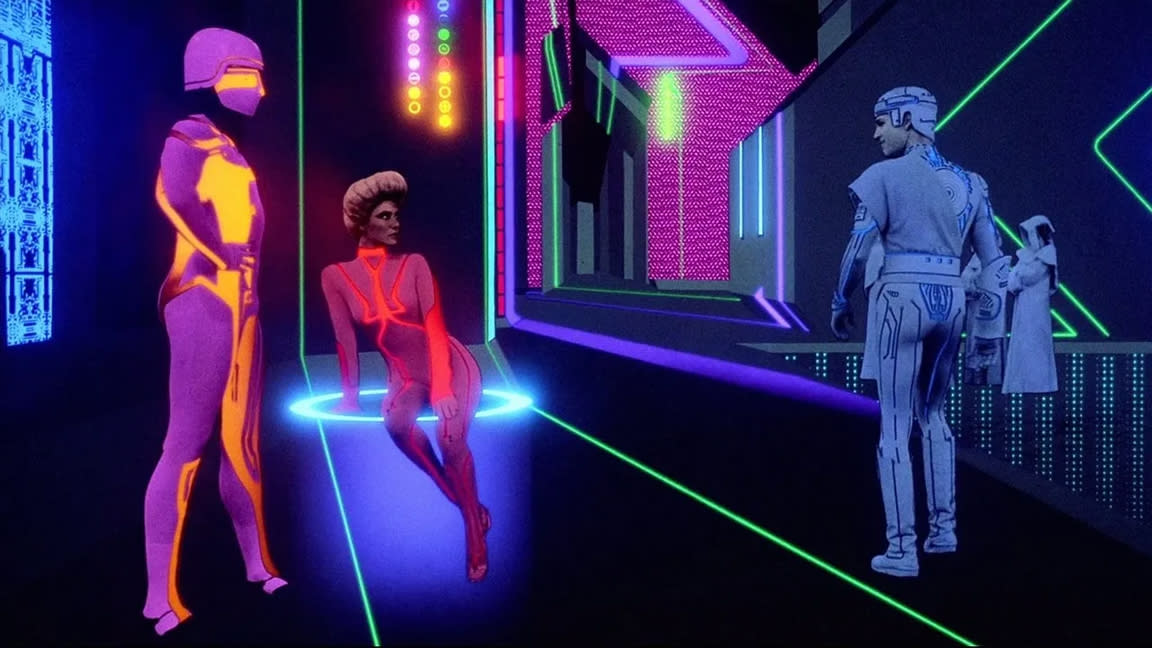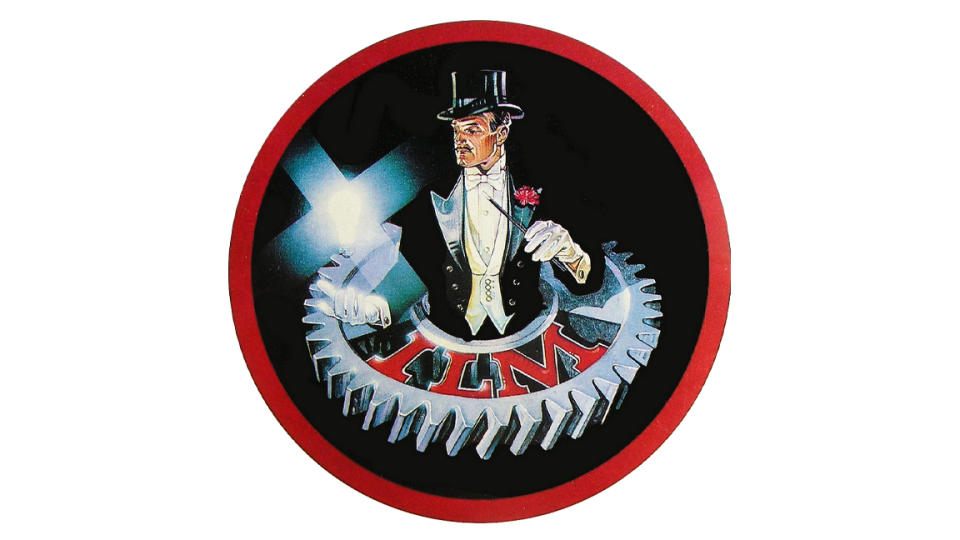The best VFX movies of the '80s - CGI effects that changed filmmaking

ILM '80S MOVIE HIGHLIGHTS

1981 Works on first non-Lucasfilm project, Dragonslayer
1982 Lucasfilm’s computer graphics division creates the Genesis Effect for Star Trek II
1988 The team won a Sci-Tech Academy Award for the ‘Morf’ software developed for Willow.
1989 The Abyss’ CG watery pseudopod wows audiences
The 1980s was the decade that ushered in a computing revolution for filmmaking and VFX. As home computers began appearing in every home and processing power grew, canny filmmakers started to push the boundaries of what could be achieved.
A far cry from the best upcoming VFX films or the CGI we see in The Creator, the early and mid-1980s was a testbed of filmmaking technology - a time when 60 seconds of computer generated imagery would blow audiences minds.
The art and design trends of the '80s merged with technology and audiences wanted films that would be bigger and more extravagant than the last release; often bad films would become hits because, well… you just had to see that CGI shot.
In this list you can find insights into the best CGI VFX films of the '80s, a retro hit of nostalgia that sits nicely with our list of the best video games of the '80s. If you're inspired, why not grab one of the best drawing tablets and a powerful laptop and start creating for yourself - filmmakers are using new technology like Unreal Engine 5 to achieve things '80s CGI artists would do cartwheels over.
11. Star Wars: Episode VI - Return of the Jedi

Lucasfilm Computer Division (Pixar) (1983)
While Return of the Jedi continued the series trend for miniatures and in camera effects there is an early use of CGI in the battle planning scene where we can see a hologram of the the second Death Star. While computers were used in other scenes to aid blue screen filming for tracking, this holo scene is pure CG.
10. The Golden Child
ILM (1986)
Often forgotten in favour of the more liberal and elaborate use of the digital morphing technique in Willow two years later, The Golden Child starring Eddie Murphy was actually the first, if limited, use of digital photorealistic CGI body morphing.
09. Looker
Tomography (1981)
Looker isn't a film top of many must watch lists, this Michael Critcton movie isn't particularly good, which is why despite being the first use of shaded 3D CGI in a feature film, it mostly gets overlooked in favour of TRON, which did it better and more often a year later.
Actress Susan Dey playing model Cindy has her body scanned, digitised and recreated in a shaded 3D model for a Frankenstein-like setup of a villainous plastic surgeon experimenting on beautful people to create perfection.
08. Flight of the Navigator
Omnibus Computer Graphics, various (1986)
A teenage boy becomes the unwitting co-pilot of a sleek, silver 3D morphing spaceship in this Disney favourite. The movie features the first use of reflection mapping, used to tie the alien spaceship into its environment. Graphics researcher C. Robert Hoffman’s techniques are still used to good effect today.
07. Labyrinth
Digital Productions, ILM (1986)
The owl in the opening sequence of David Bowie movie Labyrinth was only created and included because the real owl flew away, and it's considered the first ever photorealistic CG animal in a film.
Larry Yaeger and Bill Kroyer at Digital Productions animated and technically-directed the award-winning sequence, featuring the CG owl reflected in ripples of water as it flies above and around the cast's names.
06. Star Trek II: The Wrath of Kahn
ILM, Lucasfilm CG (1982)
Creation of the Genesis planet was Hollywood’s first fully CGI sequence and lasted sixty-seconds. It also features the first use of a fractal-generated landscape, the brainchild of ex-Boeing engineer Loren Carpenter, who discovered that fractals could be used to produce realistic-looking terrain.
Before he'd worked on the film's sequence Loren had created a fully computer-generated short film called Vol Libri - this use of fractal geometry was the building blocks for Wrath of Khan's innovative sequence.
05. Young Sherlock Holmes
ILM (1985)
The first photorealistic CG character arrived in the form of a stained glass knight who grabs a whole ten seconds of screen time. When we say photorealistic, you have to remember he was supposed to look like a stained glass knight, not a real human being.
This was one of the final jobs done by Lucasfilm’s Graphics Group. The technology and a team of 45 staff was spun off in 1986, in a deal co-funded by Steve Jobs for $5 million. The sale was prompted when George Lucas’s cash flow had stalled, following his 1983 divorce and the appalling box office flop, Howard The Duck. The group called itself Pixar and 20 years later was sold to Disney with an estimated value of $7.4 billion. Not George Lucas' best move, but I think he'd done okay.
04. Willow
ILM (1988)
Fantasy favourite Willow includes a groundbreaking sequence when the title character turns a goat into an ostrich, the ostrich into a turtle, the turtle into a tiger, and then the tiger into the human sorceress Fin Raziel. ILM won a Sci-Tech Academy Award for Morf, the morphing software developed for the movie.
03. The Abyss
ILM, various (1989)
ILM’s aquatic ‘pseudopod’ took CG to a new level. To create the effect of the water-filled creature mirroring the actors, the team digitised their faces and morphed them in software originally developed for the film Willow.
02. The Last Starfighter
Digital Productions (1984)
Spaceships go 3D in Nick Castle’s classic 1980s sci-fi fantasy. The movie is widely held to be the first use of CG to represent real-world objects in a movie. Digital Productions used innovative software and the Cray Research X-MP supercomputer to create CG for 300 shots, occupying a then-incredible 27 minutes of screen time.
01. TRON
MAGI, Triple-I, Information International, Inc., various (1982)
The film that brought CG to the attention of the masses, and made MAGI’s Light Cycles a cultural icon. TRON’s 15 minutes of CGI remain a landmark, despite the crude technology of the time: even the largest machine used in the effects work possessed a meagre 2MB of memory.
The CG work in TRON includes an early version of facial animation for the Master Control Program. The CGI in TRON was a breakthrough because up until this moment CGI was limited to still images but not automatically animate them in a film scene. It was a major effort to get TRON's Light Cycle scenes working, as the coordinates for each image had to be entered for individually by hand, with more than 600 coordinates for every four seconds of film.
A number of computer and technology studios were hired to make TRON a reality, including Information International, Inc. that owned the Super Foonly F-1 (an awesomely '80s name and the fastest PDP-10 computer ever made, and the only one of its kind).
